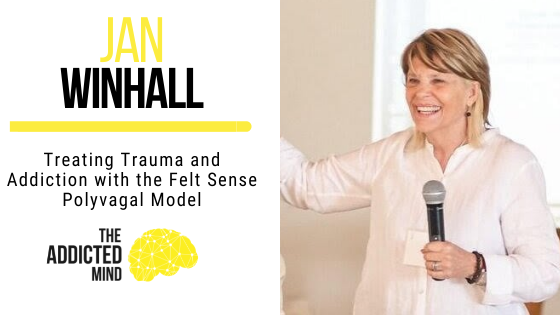Jan Winhall, the author of Treating Trauma and Addiction with the Felt Sense Polyvagal Model, explains how our nervous system influences our behavioral choices as well as how we perceive the world and our situations by walking us through the world of the Polyvagal model.
The Polyvagal Model
The vagus nerve is the 10th cranial nerve in the body. It’s the longest nerve in the body and it acts as a conduit that carries 80% of the information about our bodies, including the visceral and sensory information, up to the brainstem.
For example, in trauma, the sympathetic (fight or flight) nervous system responds by pumping adrenaline and cortisol. Once we feel safe enough, the ventral part of the vagus nerve found above the diaphragm gets activated and it relaxes the body. In sum, there’s a ventral branch of safety and a sympathetic branch that’s seen as a dual system.
Stephen Porges discovered the dorsal branch of the vagus nerve. This branch kicks in when you feel like you’re in trouble by shutting everything in the body down. This is the trauma response of the dissociated place. It helps you when you’re not safe. The problem is that it can also hurt you if your body gets stuck there when in a triggered response. Even though you could shift into the ventral place to feel safe, you could also be triggered and then feel frozen or shut down.
Our bodies have a way of protecting us when we really need to shut down. The problem with this is we can get stuck there and lose access to the ventral vagus even when it’s available. Addictions act as propellers that efficiently shift us from that sympathetic (flight or fight state) to the shutdown state or vice versa.
Treating Trauma Through Felt Sense
Through the practice of felt sensing, you learn slowly, over time, how to feel safe in your body. You begin to connect with your feelings and let go of dissociating and numbing. You become more and more present with yourself and with others in the group and world, which isn’t safe to do when you’re under attack.
If you want to learn more about how to treat trauma through the felt sense Polyvagal model, check out Episode 152: Treating Trauma and Addiction with the Felt Sense Polyvagal Model with Jan Winhall.

